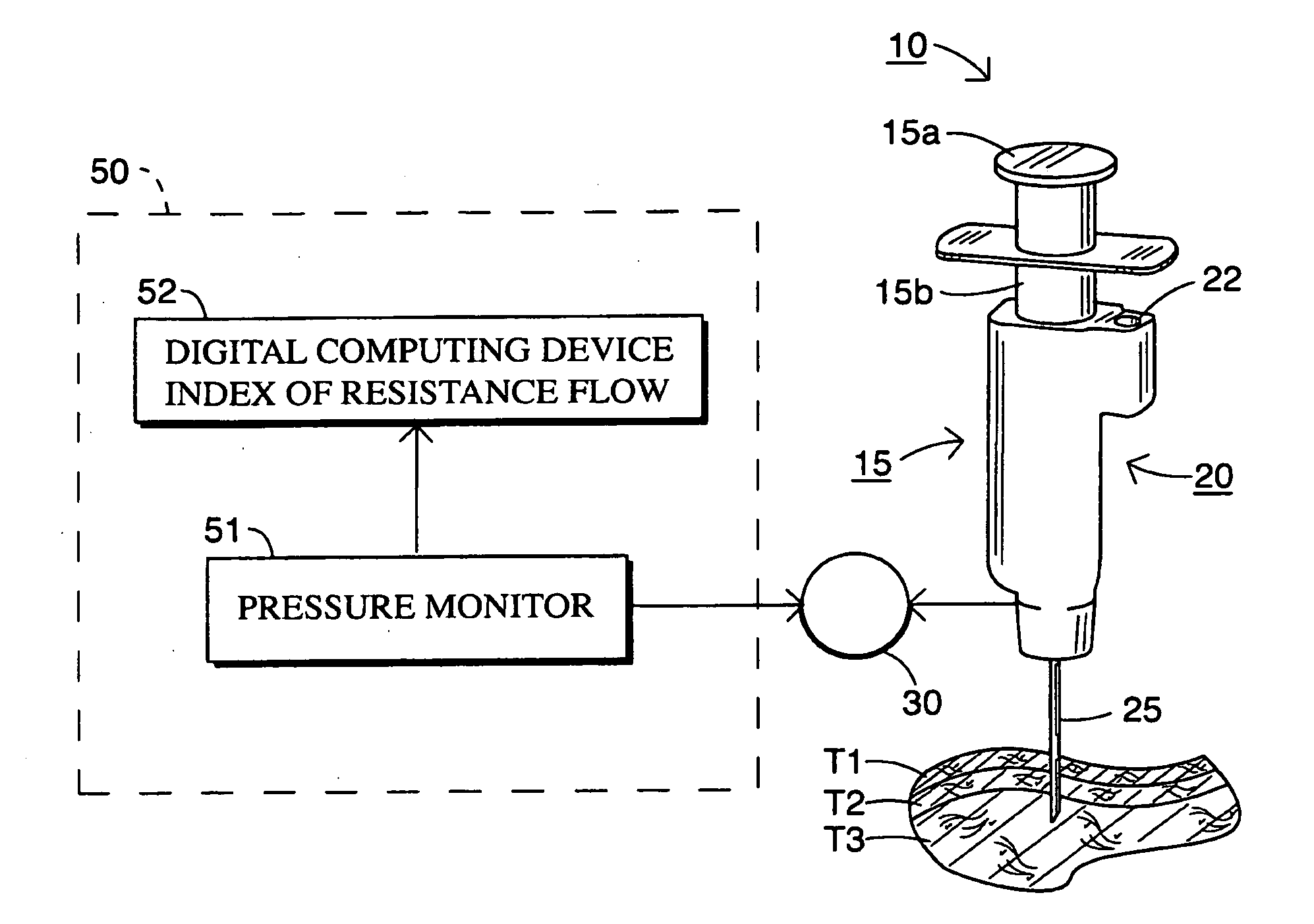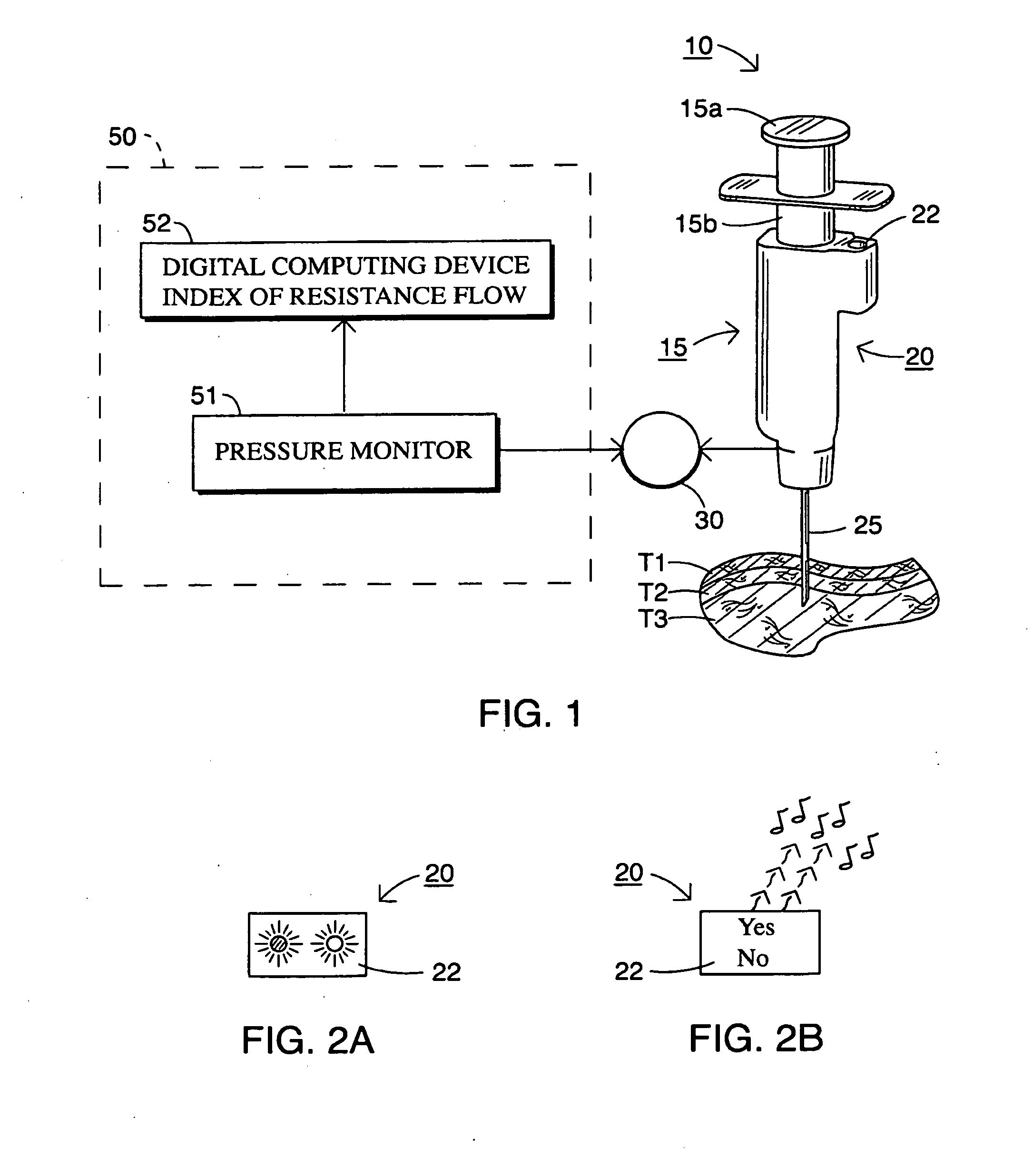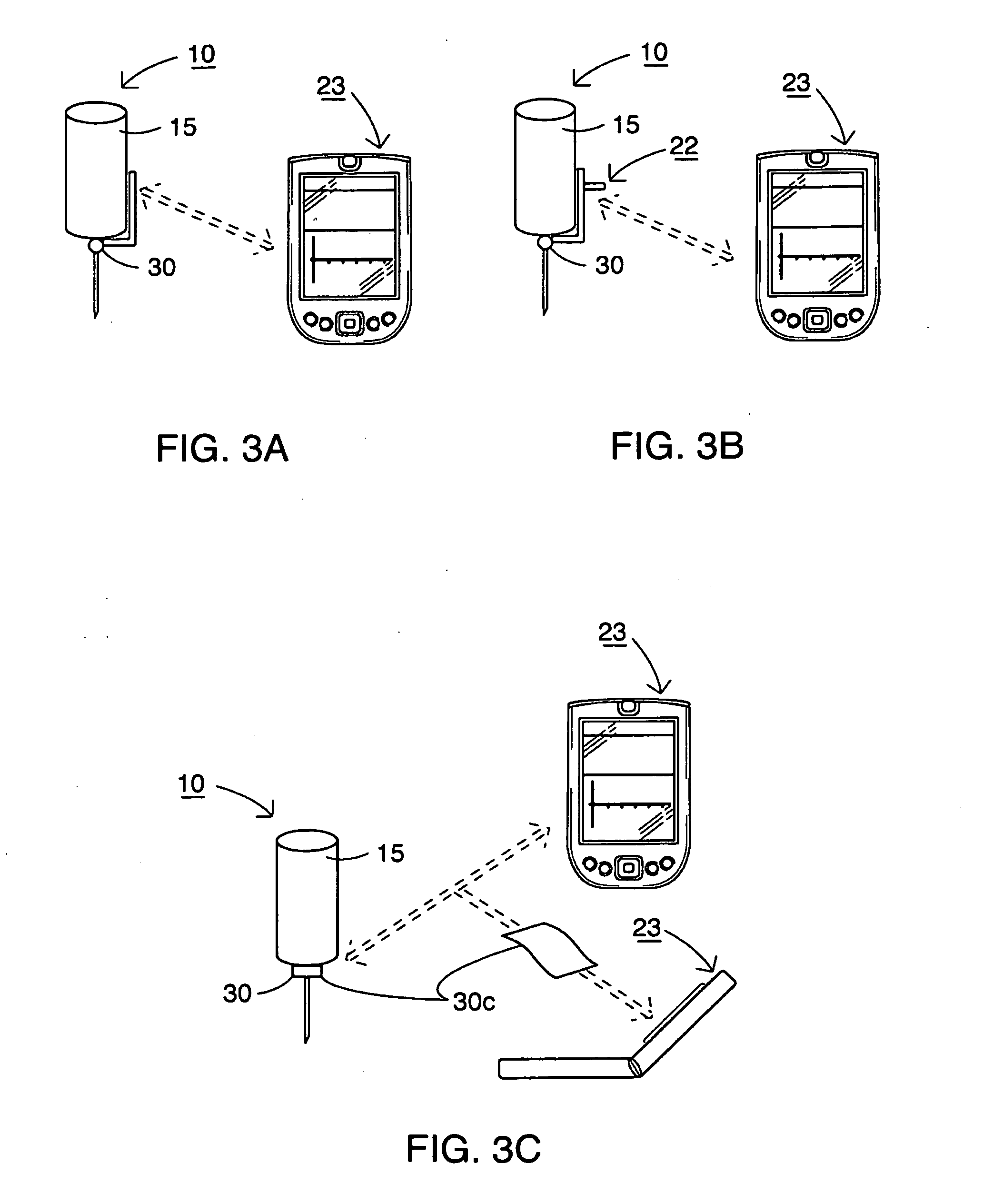Smart Injection Syring Systems Providing Real-Time User Feedback of Correct Needle Position
a syringe and real-time user technology, applied in the field of syringes, can solve the problems of limited knowledge and training of health care providers performing numerous injections, limited fluid flow, high resistance and very limited flow of operators, etc., to facilitate the proper site delivery
- Summary
- Abstract
- Description
- Claims
- Application Information
AI Technical Summary
Benefits of technology
Problems solved by technology
Method used
Image
Examples
example 1
[0049]As illustrated in FIGS. 4-6, a syringe system 100 includes a syringe 115 with a syringe plunger 115a in a syringe body 115b, which is in communication with a needle 125. Two support members or housings 120a, 120b are configured to connect sensors 130a, 130b to the syringe 115. The sensor 130a is a force sensor configured to detect an amount of force with which the user depresses the plunger 115a. As illustrated in FIG. 4, the sensor 130a is connected to the plunger 115a by the housing 120b. The sensor 130b is a displacement sensor that is in communication with the plunger 115a and detects the displacement of the plunger 115a as the user depresses the plunger 115a.
[0050]In operation, the force sensor 130a detects the force that the user applies to the plunger 115a, and the displacement sensor 130b detects the displacement of the plunger 115a as the plunger 115a is depressed. Accordingly, the sensors 130a, 130b are positioned on the outside components of the syringe 115 such th...
example 2
[0056]With reference to FIGS. 1-3, in particular exemplary embodiments, the sensors 30 are a pressure transducer and / or flow sensor that comes into physical contact with the fluid in the syringe body 15b. For example, a pressure and / or flow sensor can be provided in the housing 20 between the needle 25 and the syringe body 15b such that the housing provides a fluid channel that can be generally the same diameter as the fluid channel adjacent the needle such that alteration of the syringe 15 is reduced. Fluid impedance can be tested by a user by inserting the needle 25 into the tissue T1, T2 and T3 and then injecting a relatively small amount of fluid into the tissue T1, T2 and T3. The pressure and flow readings from the sensors 30 can then be converted into impedance, e.g., by the computer device 23 and relayed to the user via the user feedback indicator member 22.
example 3
[0057]With continued reference to FIGS. 1-3, the sensor(s) 30 are force and / or pressure sensors that measure the impedance or force / pressure on the needle 25 during insertion into the tissue T1, T2, T3. For example, the sensor(s) 30 can be piezoelectric or other suitable force sensors positioned on the needle to detect force as a function of time during needle insertion. In particular embodiments, the force and / or pressure sensor(s) 30 can be in communication with the needle 25 and / or the sensor(s) can detect a deforming force on the needle 25. The force applied to the needle 25 (or on the syringe 15) can be measured while the needle 25 is inserted into the tissue T1, T2, T3. Generally continuous force readings may be taken, and a force curve may be created. For example, the user may apply constant force during insertion, and then the force may drop when the needle 25 reaches the joint cavity tissue T3. The computer device 23 may be configured to detect the reduction in force when t...
PUM
 Login to View More
Login to View More Abstract
Description
Claims
Application Information
 Login to View More
Login to View More - R&D
- Intellectual Property
- Life Sciences
- Materials
- Tech Scout
- Unparalleled Data Quality
- Higher Quality Content
- 60% Fewer Hallucinations
Browse by: Latest US Patents, China's latest patents, Technical Efficacy Thesaurus, Application Domain, Technology Topic, Popular Technical Reports.
© 2025 PatSnap. All rights reserved.Legal|Privacy policy|Modern Slavery Act Transparency Statement|Sitemap|About US| Contact US: help@patsnap.com



